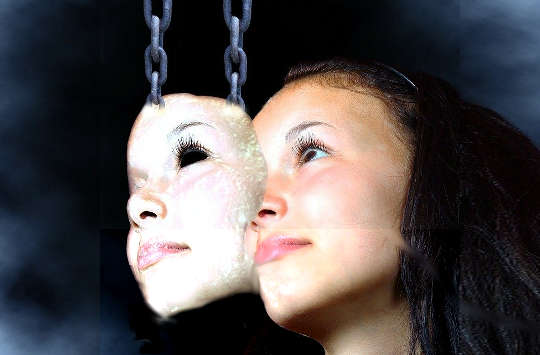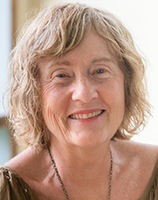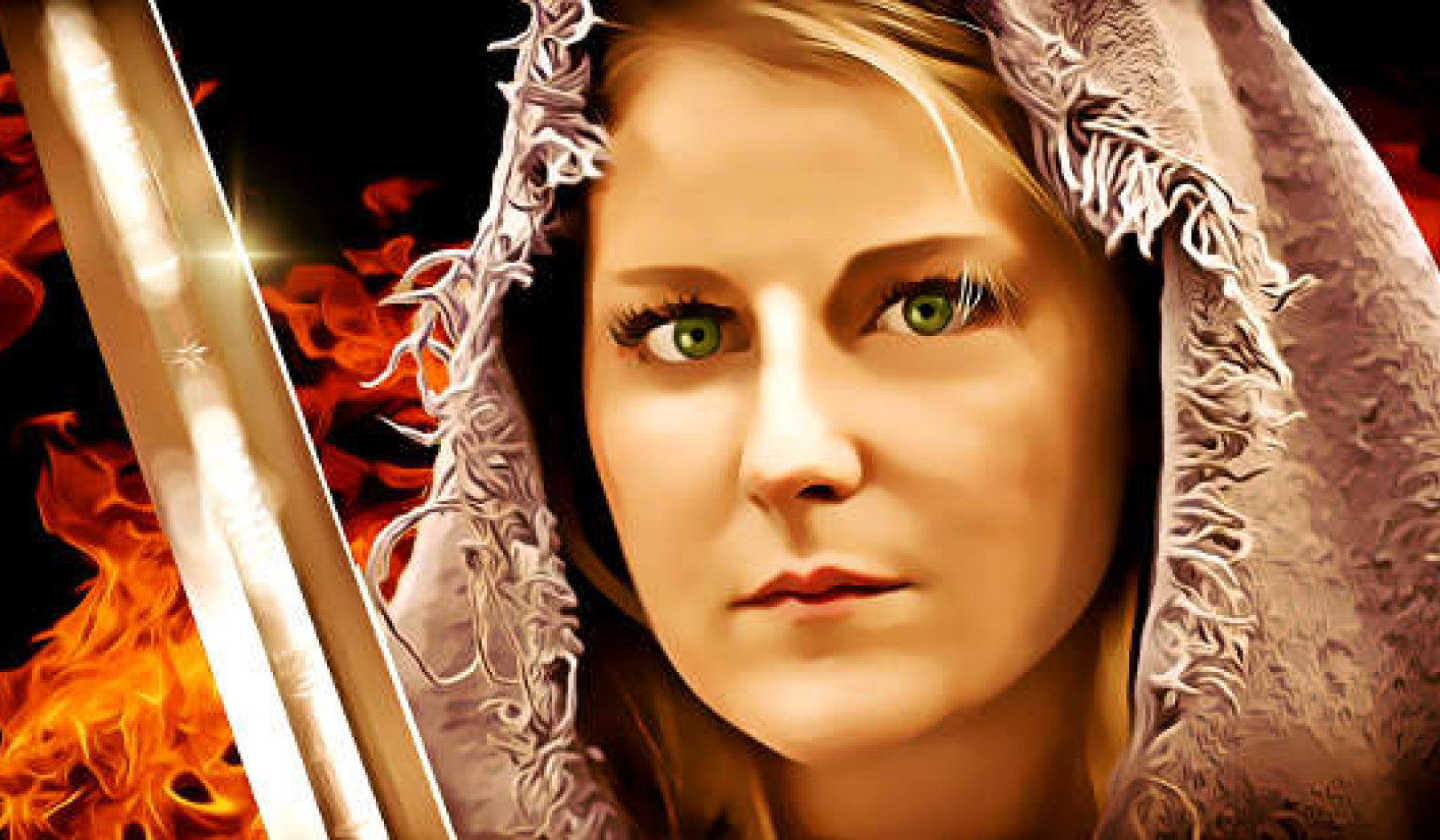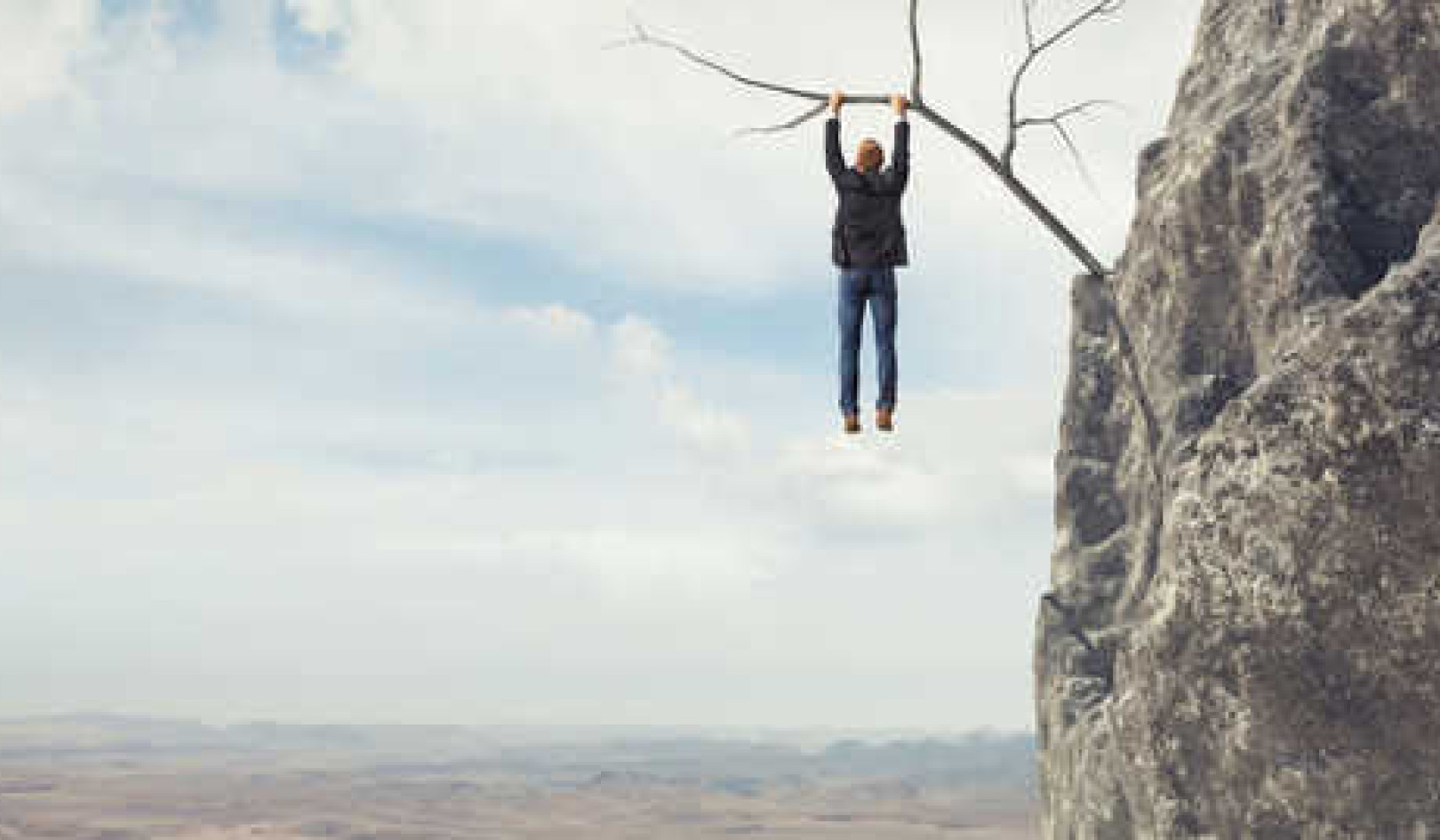
Image by kalhh
We live in relationship. Even if we’re hermits on the top of a mountain we cannot help but relate to the blade of grass, the brook, the sun, and the stars. By simply focusing on a tree, an animal, another person, or even on an object, we create the twosome that is a fundamental law of our universe.
In this world of duality, we are always looking for—or fighting against—that other part of the equation, whether it’s hot versus cold, hard versus soft, or male versus female. Just as heaven reaches for Earth, and our right hand for our left, so are we looking for—or fearing—the perfect fit that will make us whole.
Duality: The Signature of Our Universe
Can we trust that all form has its corresponding fit? In a perfect creation, male and female are joined together, like hand and glove. (Male and female must be read as archetypal tensions, not as types of people. Couples of all sexual orientations have those same dichotomies.)
Duality is the signature of our universe. We are in a world of doing, where our actions, our handiwork, make our reality. If, as Kabbalists tell us, the perfect union is the one where two forms, face-to-face, recreate the primordial androgyny, there is work to be done to bring them to once again face each other.
I remember reading about an old American Indian tradition where grandparents at the birth of a grandson incubate a dream, asking to be shown who the boy's soul mate is, then they weave and embroider her wedding dress. All this is done in secret, and when the grandson grows to adulthood, the grandparents watch whether he gravitates to his destined partner. If he does, they ceremoniously present the wedding dress to the girl's family.
Fitting Our Dual Soul Together Again
In both American Indian and Jewish traditions, man is not alone; man's original state is as part of a couple and must seek to return to this state of union. This begs the question: is the single most important goal of our lifetime to find and fit the two parts of our dual soul together again? By striving to live harmoniously with our other half, are we repairing the world? Kabbalists call this “making the Name,” or giving form to the divinity.
We can all agree that love, when it comes our way, is a divine ecstasy, and for a moment, recreates paradise on earth. Is it not a pursuit worthy of all our attention? But already from experience, we know the pains and hardships of relationship. We have agonized over our love affairs and obsessed about them endlessly, to no avail. The striving for love cannot follow the pathways of logic, but must, of necessity, plunge the depths of the subconscious.
Souls and Soul Mates
Whether or not we believe in the concept of souls and soul mates, we all understand from experience that a perfect alignment is difficult to find, and just as difficult to sustain. Like tightrope dancers, we either strive to maintain a precarious balance, or we are playing blind man's bluff, to identify and catch the right partner, or elusive other.
It is relationship that causes us most angst and questioning. Our yearning to be whole never ceases. This word longing, interestingly, comes from the idea of elongation. Our longing stretches us out toward an unknown, toward something that looks desirable, or something that's not yet there.
"Lekh lekha," Go, says God to Abraham, but where to? To an unknown that we hope will complete us. And when we encounter it, our feelings of respect, gratitude, and love, or our reactions - fear, repulsion, and desire to possess or to destroy - will show us who we really are. For lekh lekha also means "go to yourself." And a relationship, from the get-go, reveals us to ourselves.
Are you truly wanting to find your soul mate? Or if you already have a partner, are you getting out of your own way to allow for that ineffable time-stopping moment when the two of you become as two mirrors reflecting each other? You may think so, but deeper imperatives could be blocking the way. So many have come to me crying with longing, raging against fate, or their partner, not aware of the part they played in blocking the realization of their hopes.
Your First Task: Awareness
Your first task is to come to the full awareness that you create your own life. You are responsible for freeing your subconscious programs that block you from attracting your soul mate, or from saying with joyful recognition, "This at last is bone of my bones and flesh of my flesh."'
What does relating mean? How do we reinvest the world and ourselves with respectful, grateful, and loving relating?
There is an ancient story from the Bible that gives us a clue. It is the story of the people of the Tower of Babel. Once upon a time, the text tells us, "the whole earth was of one language and of common purpose." But soon the people decided to "make a name for themselves, lest they be dispersed across the whole Earth." In effect, as soon as naming entered the picture, the men and women who were building the tower began to babble. (Babel means "confusion has come.")
Before Babel, these people were "of common purpose." What can this common purpose be?
What do we all long for? Happiness, of course, along with love, goodness, and peace. Can our one language be the lingua franca of the heart?
Return to the World of Feeling
How do we return to feeling? What is blocking our way? We seem to seesaw very easily from desire to emotion, from thwarted instincts to reactivity. We live in a world where instant gratification is expected, where the common purpose is largely disregarded.
Being caught in the loop of our own self-interests, our desire "to make a name for ourselves," how can we detach ourselves enough to contemplate another possibility? How can we take a leap out of this general impoverishment into the world of feeling?
Love happens when we least expect it, in an instant. We take a turn in the road and are caught breathless before a wondrous sight. We meet a stranger, our heart stops and it is done, we are in love. A smile, a child's face, beauty, a poem, music, or great art can do that to us. Without that jolt we cannot plunge into the mysterious world of feeling, where we are made whole. But can we wait for the unexpected?
The Language of Love and Imagination
We are in such dire need. Is there a way to throw ourselves haphazardly into wholeness? What common forgotten language must we rediscover to help us with the plunge? How can we love others if we cannot leap out of ourselves toward them, to hold them, metaphorically, in our arms, to include them, encompass them, to merge with them and become one? "Love thy neighbor as thyself." This jolt out of our petty selves is served not by our rational minds but by our imagination. There is no love without imagination.
As we know, imagination is devalued, put down as so much fantasy and daydreaming. If we go with the premise that we must be true to the facts, that we must unravel every conflicting statement of "he said, she said" in their war of attrition, we once again ignore the common language.
What reality are we talking about? We have two brains: our sun, the verbal, causal, logical, and linear - and our moon, the imaginal, dreamy, creative, spontaneous, leaping, playful, and surprising.
The accumulation of data, and the gaining of true knowledge and knowing of another, are two different realities, yet we pit one against the other. They cannot exist apart without ill consequences, as is so abundantly clear. Separating the heart-felt embodied experience of inner reality from the verifiable step-by-step appraisal of outer reality will not help us resolve the miseries and difficulties of relationship. Can we at least agree to respect both realities, as a first step towards creating a "common purpose?"
The Difficulties of Relating
The Jewish philosopher Martin Buber coined these dual modes of being as I-It and I-Thou:
I-It is lived in monologue where the It becomes "a passive object of knowledge" from which the I is "realistically alienated."
I-Thou, on the contrary, is "the companionship of creation, whenever we come near one another, because we are bound up in relation to the same center."
Can this describe our struggles? Two forms of relating that paradoxically place us in both camps, as observers and as participants. Accepting that both have a role to play, how can we tease out the difficulties of relating?
Imagine yourself sitting at the kitchen table, angrily accusing your partner, pounding insults and words at him or her. It's hard to give up the angry pleasure of naming the other! This reminds me of a scene I witnessed between my teacher and her husband.
I was sitting in the garden with them one afternoon, when something he said provoked her anger. She started off on a tirade of grievances that seemed to have no end. He hid behind his newspaper, and I shrank into my corner, appalled. Suddenly she stopped, kissed his hand and said coquettishly: "Mais je vous aime, chéri." (But I love you, darling!) He came out from behind his newspaper, kissed her hand and with a big smile replied: "Moi aussi, chérie!" (Me too, darling!)
I never forgot that switch from I-It to I-Thou in an instant.
Exercise: Eyes and Oneness
Breathe out slowly three times, counting from three to one. See the one as tall, clear, and bright.
See your beloved standing in front of you. Sense all the changes in your body and heart.
Breathe out. Come closer and closer. Embrace.
Breathe out. Plunge your eyes deep into your partner's eyes. Feel your whole being plunging into the ocean of luminosity that is your partner's eyes. Sense, see, feel, and live yourself becoming one.
Breathe out slowly and open your eyes.
The act of love cannot happen without duality. Use the split instead of fighting it. Stoke each other's fires until your flames merge and rise ever higher.
In the act of finding your soul mate, or in the act of love, timing is all. Love plunges us into deep time, where time as we know it stops, and we enter a blissful state of no-time, we enter paradise on Earth.
Copyright 2022. All Rights Reserved.
Printed with permission of the publisher,
Inner Traditions International.
Article Source:
BOOK: The Kabbalah of Light
The Kabbalah of Light: Ancient Practices to Ignite the Imagination and Illuminate the Soul
by Catherine Shainberg
 In this step-by-step guide to kabbalistic practices to connect with your natural inner genius and liberate the light within you, Catherine Shainberg reveals how to tap instantly into the subconscious and receive answers to urgent questions. This method, called the Kabbalah of Light, originated with Rabbi Isaac the Blind of Posquieres (1160-1235) and has been passed down by an ancient kabbalistic family, the Sheshet of Gerona, in an unbroken transmission spanning more than 800 years.
In this step-by-step guide to kabbalistic practices to connect with your natural inner genius and liberate the light within you, Catherine Shainberg reveals how to tap instantly into the subconscious and receive answers to urgent questions. This method, called the Kabbalah of Light, originated with Rabbi Isaac the Blind of Posquieres (1160-1235) and has been passed down by an ancient kabbalistic family, the Sheshet of Gerona, in an unbroken transmission spanning more than 800 years.
The author, who is the modern lineage holder of the Kabbalah of Light, shares 159 short experiential exercises and practices to help you begin dialoguing with your subconscious through images.
For more info and/or to order this book, click here. Also available as a Kindle edition.
About the Author
 Catherine Shainberg, Ph.D., is a psychologist, healer, and teacher with a private practice in New York City. She spent 10 years of intense study of the Kabbalah of Light in Jerusalem with Colette Aboulker-Muscat and an additional 20 years in continuing collaboration with her.
Catherine Shainberg, Ph.D., is a psychologist, healer, and teacher with a private practice in New York City. She spent 10 years of intense study of the Kabbalah of Light in Jerusalem with Colette Aboulker-Muscat and an additional 20 years in continuing collaboration with her.
In 1982 Catherine Shainberg founded the School of Images, dedicated to teaching the revelatory dream and kavanah (intent) techniques of this ancient Sephardic Kabbalah tradition. She conducts imagery and dreaming workshops internationally.
Visit her website at schoolofimages.com/



























